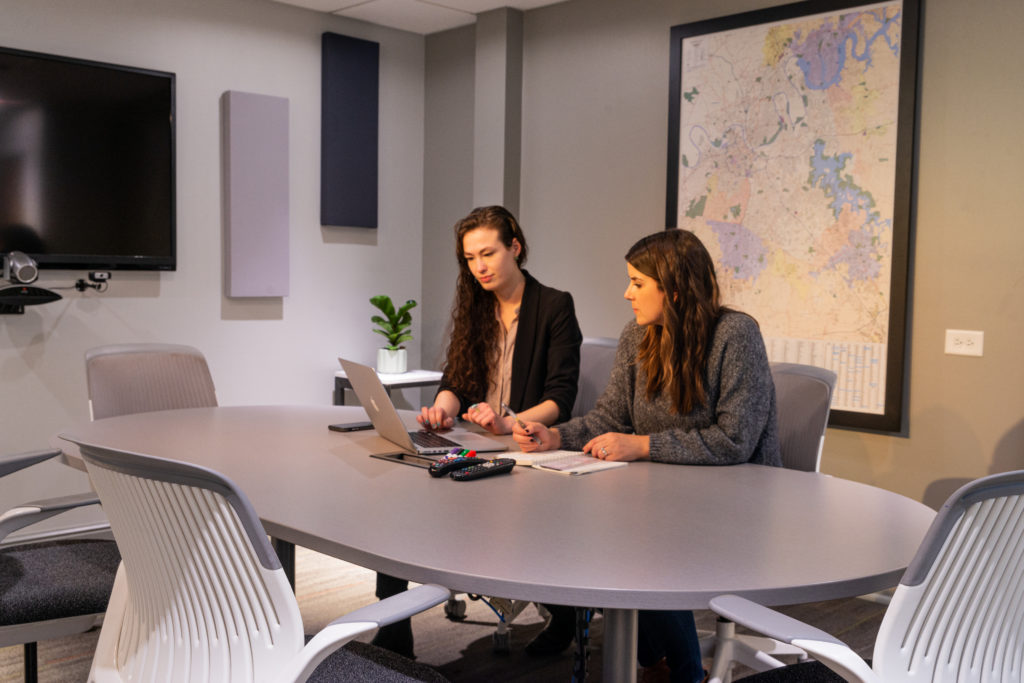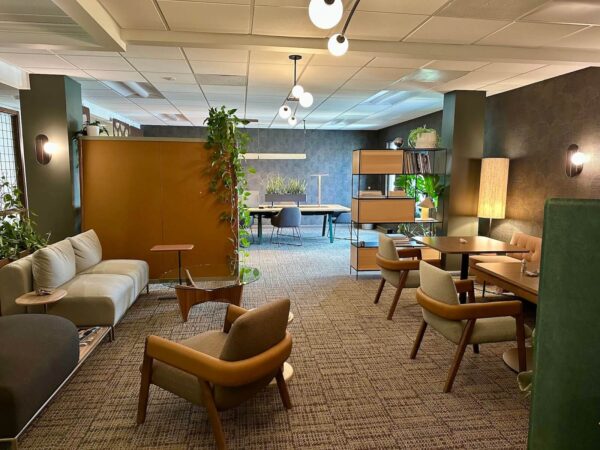While working from home can have its upsides, multiple studies show that no face-to-face communication with colleagues over time can create workplace silos and prevent productivity. Something as simple as collaborating in a meeting room once a month or so significantly decreases the negative effects of company-wide remote work.
Are you debating whether to work in-person or remotely? What is better for business innovation and productivity? Let’s dive into what research says:
Even though most media articles were all smiles and rainbows about working remotely in early 2020 re: having a better work-life balance, research has shown that long-term, firm-wide remote work can have negative effects on business innovation and productivity.
True, some days we need quiet solitude to focus on finishing a task. But when it comes to coming up with new ideas and relaying information to colleagues, in-person meetings and synchronous communication are the best choice.
Study 1: workplace silos due to asynchronous communication
A recent study on the effects of Microsoft’s work-from-home policy, published Sept 9, 2021, says “firm-wide remote work caused the collaboration network of workers to become more static and siloed, with fewer bridges between disparate parts.”1
The study further suggests that positive team performance is strongly tied to in-person and phone/video communication versus email and instant messaging. Synchronous communication (in-person or phone/video) also better helps teammates explain, analyze, and come to an agreement on the meaning of information.1
When it comes to processing complex information, the more synchronous the communication, the better. Therefore, a permanent remote work policy could hinder a company by making collaboration more difficult for its workers.
The solution for individuals who work at a firm-wide remote company? Meeting Rooms.
Coming together face-to-face for a set amount of time allows the proper interchange of information to take place for a big project, proposal, or problem.
Study 2: employees prefer in-person communication
Even pre-pandemic research from 2019 on remote working, or “teleworking” sheds light on the long-term effects of disrupted communication. This pre-pandemic study looks at communication shared with individuals who opted to work from home when it was not mandated.
In 2019, the argument was that working from home provided separation, which aided productivity due to reduced work interruptions. If someone working from home could connect to their colleagues via information and communications technology, that was sufficient. However, “while such choices might improve teleworkers’ performance in the short term, it may be harmful in the mid to long term as the distance involved may negatively impact an organization’s knowledge base as well as interdependent and collaborative work elements.”2
Why is that the case? Researchers argue that the exchange of tacit knowledge should occur in person, since it is more action based. Further findings indicate that we tend to prioritize people and things that are closest to us. Therefore, we are more likely to seek knowledge from or exchange information with people physically nearby. Participants in the study admitted they would prefer face-to-face communication to seek expertise, such as during in-office interactions.2
In fact, when coworkers are working during different times of the day and use asynchronous communication, like email and IM, everyone must configure new ways of interacting and communicating with one another, “making knowledge sharing more arduous, formalized, and less spontaneous.”2
Why meeting rooms solve workplace silos
With remote work on the rise and more autonomy granted to individual employees, what is the best way to meet in the middle and still move forward with company projects? We propose the idea of renting out a conference room in order to meet face-to-face for scheduled blocks of time.
Why? Both studies indicate that in-person collaboration every once in a while can make up for the lack of contact during the typical work day. By meeting in a conference room as needed, companies will prevent workplace silos and encourage cross-department communication and collaboration. Face-to-face communication, in turn, will improve productivity and innovation for your business.
As a company owner or as a company employee, what do you prefer? Is meeting face-to-face in a conference room or office space better for collaboration?
While you’re thinking about it, take a look at our Meeting Room and flexible Office Space rental options.
Sources
- Yang, L., Holtz, D., Jaffe, S. et al. The effects of remote work on collaboration among information workers. Nat Hum Behav (2021). https://doi.org/10.1038/s41562-021-01196-4
- van der Meulen, N., Peter, v. B., Eric, v. H., & Mülder, S. (2019). No teleworker is an island: The impact of temporal and spatial separation along with media use on knowledge sharing networks. Journal of Information Technology, 34(3), 243-262. doi:http://dx.doi.org/10.1177/0268396218816531
Read more on . . .







